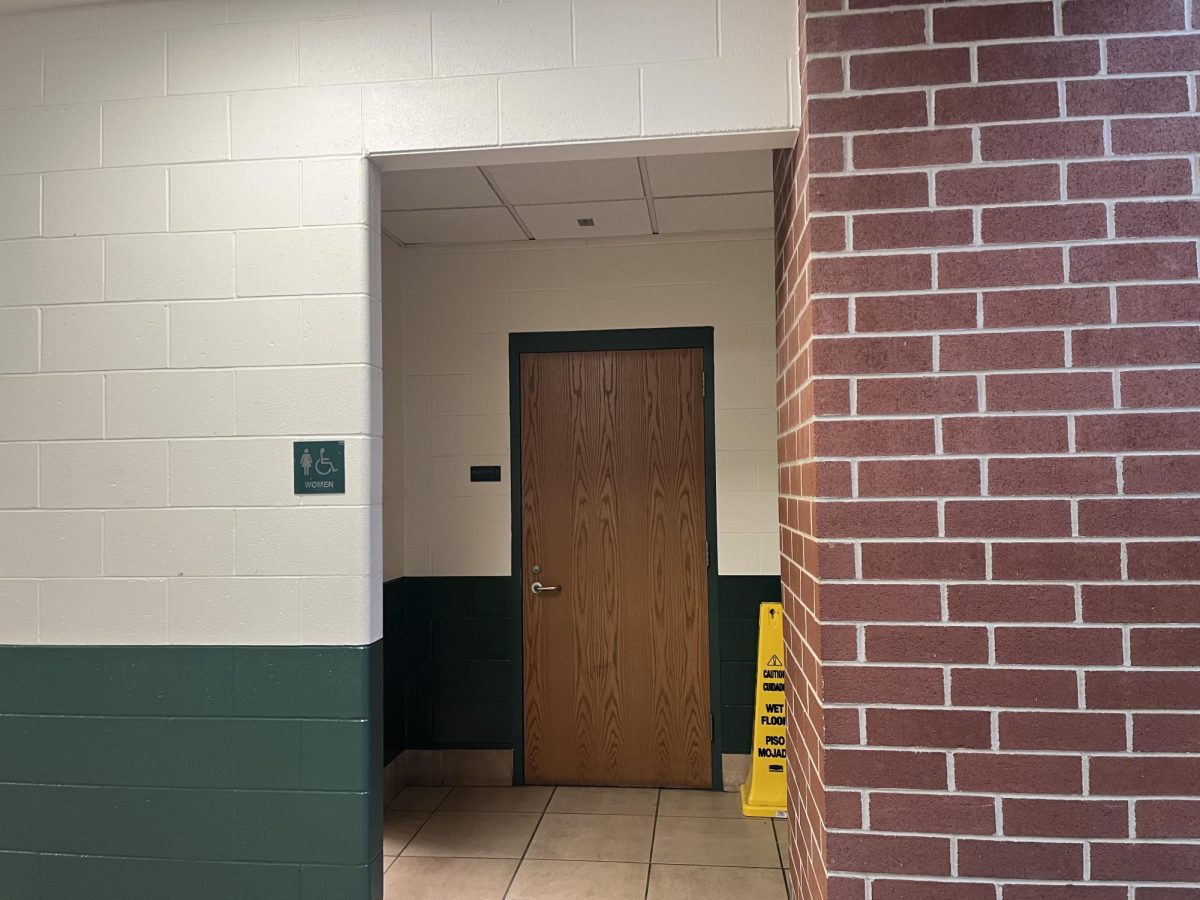“We want to assure you that we are taking proactive steps to address this excessive heat issue.”
This is a laughable sentence sent in an email from the superintendent’s office. The word proactive is especially provocative, as the email arrived in our inboxes at 11:00 AM – smack dab in the middle of the infamous scorching Thursday that forced DHS to confront the climate crisis.
The high temperature in Dartmouth, MA on September 7, 2023 was 92 degrees. Bearable, perhaps, but the dew point clocked in at 71.09, which made the air feel uncomfortably muggy – or, as the National Weather Service phrases it, “becoming oppressive.” If your class couldn’t escape to the air conditioned library, you were left to stick to your chair, melt into your desk, and force yourself to focus on the assassination of Archduke Ferdinand.
Besides pushing sports and music practices to cooler hours – soccer practice at six in the morning, volleyball practice from 7:30-9:30 PM, for example – Dartmouth made no major adjustments to their school day. We “stuck it out.” But DHS – and other schools in Dartmouth, the South Coast, and the nation – lack the resources for combating heat. Sticking it out wasn’t the wisest decision.
“During the extremely hot weather last week, our heat related visits were 25%, 30% and 20% respectively on September 6, 7, and 8,” DHS School Nurse Marisha Wildrick told me in an email. She added some advice: “Although it is fun to wear new school clothes at the start of the school year, it is important to remember to dress appropriately for the temperature. Some of the students who visited the Health Office last week were wearing clothing more appropriate for cooler fall weather. Dehydration can happen quickly while perspiring in the heat and humidity. Bringing a water bottle to school and sipping throughout the day can be helpful.”
Hydration was a recurring theme throughout the week. The superintendent’s email touted that Dartmouth “provid[ed] access to water stations throughout the schools;” basically, teachers had to be more lenient when it came to allowing students to go to the bubbler. However, some of bubblers’ filter lights are red, meaning “the [bubbler’s] filter has reached 100% of its usable life and should be replaced promptly,” as York Community High School’s student newspaper explained. The water quality of red light bubblers is questionable.
As an alternative to bubblers, the DHS Cafeteria handed out free plastic water bottles. This is a thoughtful gesture, but it’s important to focus on the plastic part of that. Plastic is primarily composed of three fossil fuels – crude oil, natural gas, and coal. Taking into account each part of the material’s life cycle, the plastic industry will emit 1.34 gigatons of greenhouse gasses per year by 2030. DHS students born 400 years from now will still be living with the plastic bottles our school consumed on September 7.
Overreliance and overconsumption of fossil fuels and plastic are part of the reason we experienced these extreme weather events. In the future, DHS should give out canned water, as aluminum can be infinitely recycled. Consider the towns on the Cape that have banned single-use plastic bottles; if they used Dartmouth’s tactics to combat the heat, they’d have to give out alternatively packaged water. It’s not an unfeasible switch.
The superintendent’s email explained that “it is crucial that students drink plenty of water to stay comfortable and safe.” But downing plastic bottles doesn’t remove the humidity from the air. Which brings up a controversial issue: installing AC in schools.
DHS has AC – in a select few places. The library became a refuge for sweltering classes who may have otherwise been stuck in a dangerously hot classroom with 20 other people radiating their own body heat. The email hinted at this, describing how “leadership and maintenance teams… monitor[ed] the building and classroom temperatures and, where necessary, [took] mitigating steps to improve the environment, such as moving a classroom to a different area.”
However, only three classes can fit in the library at a time. Other rooms with AC are few and far between. The main reason the library and the computer labs got first dibs on AC was to prioritize the health and safety of technology and books. In the air conditioned fitness room, yours truly spent 15 minutes on the rowing machine and 30 on the weights before being sent back to class – in the sticky, sweat-drenched clothes I worked out in (it was picture day, by the way.) DHS does not require students to change for gym, nor provide students with the time to change, nor provide easy access to the locker rooms (they’re locked throughout the school day). For female students, this is the perfect recipe for yeast infections. For everyone, it’s unhygienic.
But sweat is far from the most dangerous effect of extreme heat. The CDC reported such weather conditions cause “heat stroke and related conditions” as well as “cardiovascular disease, respiratory disease, and cerebrovascular disease.” During heat waves, there are “increased hospital admissions for cardiovascular, kidney, and respiratory disorders.” Students aren’t the only ones susceptible to these health issues; aging staff, as well as staff with heart and respiratory conditions, are at higher risk under heat. Among those most affected by heat, the CDC reports, are “people 65 years of age and older… and people who are ill or on certain medications” because their bodies have weaker temperature regulation systems.
There are also ACs located in the guidance and main offices, since the administrators work throughout the summer. However, summer is no longer limited to June, July, and August. After the week of September 3, it’s hard not to feel resentful imagining the administrators watching the weather reports in their cool offices and declaring, “Let’s see what happens.”
Or, more likely, they didn’t realize how bad the heat would actually be.
Heat is sneaky. It creeps in rather than smashing into you like a natural disaster, disguising its lethality. How can you worry about heat waves when Maui’s on fire and Vermont is submerged in floods? Plus, it’s easy to forget how truly intense it was once the temperatures climb back down. For a week, the heat was all DHS students could talk about; now, it has slipped away into an old memory.
Waiting for the discourse to die down is an easy way to avoid creating a solution. However, AC isn’t the ultimate antidote to our school’s heat problem.
When I sat down with Assistant Principal Michael Martin, he explained that installing portable air conditioners in every classroom is going to cost money the district can’t afford. AC is expensive to install in general, but it’s a whole other story to install it after a building has been constructed. Tearing into the air ducts of a 20-year-old school with aging infrastructure would be a “multimillion dollar” undertaking, Mr Martin estimated. The bruising budget deficit headed for the district this year would make installation even more costly.
While in construction, DHS was supposed to have ACs across the school. However, a grass-roots organization named Citizens for Responsible Decisions “filed multiple appeals against the school project, delaying the opening of the facility to 2001 and costing the town more than $2 million,” as reported by South Coast Today. Ultimately, $3 million of the budget had to be cut, although the school got back “about $1.5 million through competitive bidding.” One of the sacrifices to fit the trimmed budget was schoolwide air conditioning, “although plumbing for central air conditioning has been installed if it were decided to be provided to the entire school in the future.”
Mr Martin said the high school considered acting on this prudent plumbing, specifically because summer school, camps, and sports turned DHS into a “year-round” building. But for a district already plagued with budget issues, it makes sense the consideration never amounted to anything more than a consideration. Mr. Martin said the school never discussed installing heat pumps, an energy-efficient heating/cooling system covered by the tax credits in the Inflation Reduction Act (IRA).
It’s crucial to mention that if AC is ever widely installed in DHS, every unit would run on fossil fuels. Mr. Martin mentioned that the school switched from coal to natural gas five years ago, but natural gas is still a non-renewable form of energy. And if we can’t afford to install AC, solar panels are out of the question. In an interview with Editor-in-Chief Mackenzie Boucher, then-Interim Superintendent James Kiely explained that the only way to install school solar panels is to raise taxes – an unpopular proposal that would be incredibly difficult for the town to approve.
Mr. Martin wasn’t keen on calling a half day or suspending the entire day for an extreme heat event: do we trade hot days in September, he reasoned, for hot days tacked onto June? “There were a lot of voices in the decision,” he remarked, alluding to Board of Health Director Christopher Michaud and admin across the school district. He cited that abruptly shutting down school for a heat day would put several families in shambles; parents would have to leave work to pick up their students or hurriedly find daycare. This argument, however, can be easily reversed onto snow days.
Mr. Martin knows that extremely hot days aren’t going away. I asked him how the school would prepare for future heat. Class would relocate to the library, he answered. Teachers would be encouraged to bring in fans (on their own dime), and students sick from humidity would be sent to the air conditioned nurses’ office. Or, as he summarized it, DHS would do “the same thing.”









